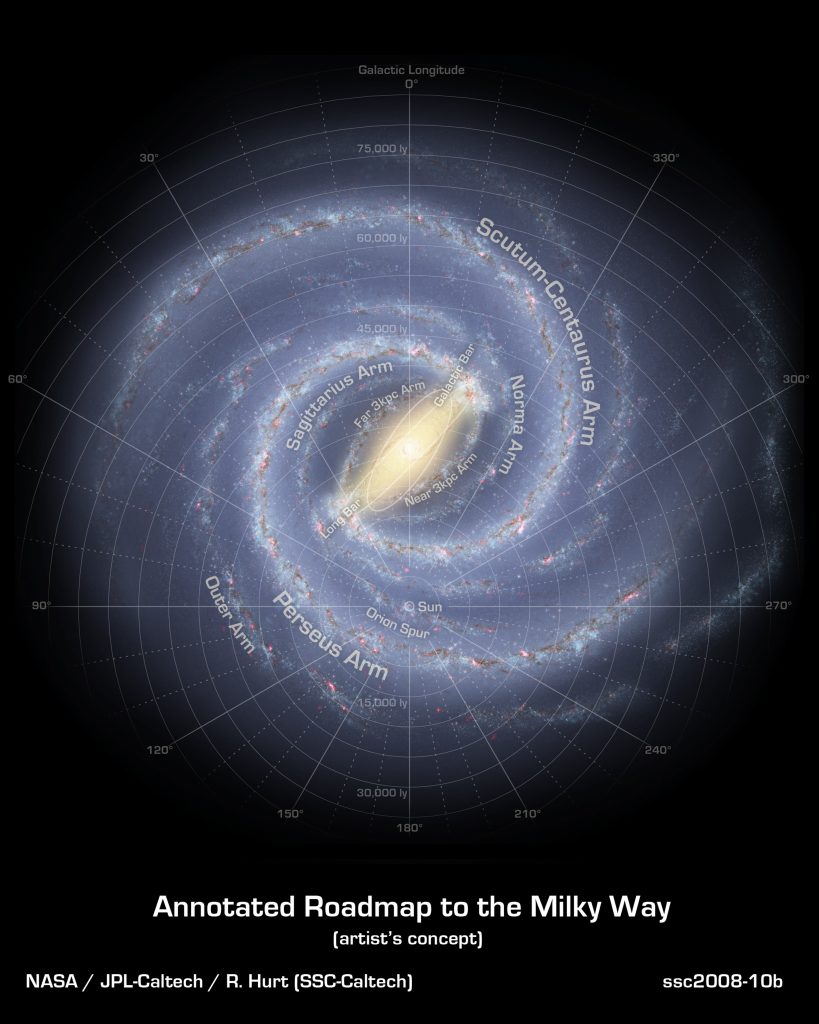9 Our Location in Space (Assignment)
Janice Hester
The classic video Powers of Ten shows how quickly powers of ten can change your perspective. The scale of the image in the video increases by a power of 10 every second, starting from a picnic and zooming out to show a city, the Earth, the solar system, and beyond. As the scale increases, the speed at which the video zooms out is also increasing by a power of 10 every second; each second the perspective zooms out ten times faster than the second before.
The next video was put together by the American Museum of Natural History as part of a project to visualize the known Universe. It zooms out through space much faster than the Powers of Ten video and uses new data sets (and there’s lots of new data since 1977) to show the Universe on an even larger scale. Colored dots in this video show the positions of observed galaxies and quasars, not the appearance of the galaxies.
The Scale of the Solar System
Follow the link below to see a “tediously accurate scale model of the solar system.” (Merriam Webster defines a small model as a small but exact copy for example, a scale model of a ship.[1])
If the Moon Were Only One Pixel (Links to an external site.)
The diameter of the Moon is 2,158 miles ( 3,474 km); so every pixel in this extremely long image represents a square of empty space (or occasionally a planet) that is 2,158 miles long by 2,158 high. This model isn’t exactly correct, because it represents the planets as being all lined up in one long line, which the aren’t. The image is great for getting a sense of how much of the Solar System is empty space.
The Sun’s Place in the Milky Way

The Earth and other planets are in a nearly-circular orbit around the Sun, and we’re all riding the Earth’s surface as the planet orbits around its axis, but these aren’t the only ways in which we’re moving. The video below visualizes the Sun’s motion through the Milky Way. The Milky Way, in turn, is falling toward the center of a super cluster of galaxies, and is on a crash course with the Andromeda galaxy. All of these motions are determined by the interplay of gravity and the conservation of angular momentum.
Using the video determine whether each of the motions below is mostly circular or mostly linear (straight).
- “Scale model.” Merriam-Webster.com Dictionary, Merriam-Webster, https://www.merriam-webster.com/dictionary/scale%20model. Accessed 6 Aug. 2020. ↵
